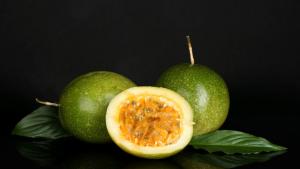Introduction
Many visitors to Irvine, California may notice the presence of Brazilian Pepper Trees throughout the city. These trees provide a unique aesthetic to the area, but some may wonder why Irvine specifically chose to plant them. This article will explore the history and purpose behind the decision to introduce Brazilian Pepper Trees to the community.
Background
Brazilian Pepper Trees are native to South America and were introduced to California in the late 1800s as an ornamental plant. The trees quickly gained popularity due to their vibrant green foliage and bright red berries. However, the trees are also known for their invasive nature, quickly spreading throughout the local ecosystems and outcompeting native plant species for resources.
Why Irvine Planted Brazilian Pepper Trees
In the 1960s, Irvine Company, which owned much of the land in the area at the time, saw an opportunity to use Brazilian Pepper Trees as a way to beautify the landscape and increase property values. At the time, Irvine was still a developing community and needed to attract new residents and businesses to the area.
Brazilian Pepper Trees were chosen because they offered several benefits. Firstly, as mentioned earlier, the trees are visually striking and add to the overall aesthetic of the area. Secondly, the trees are incredibly hardy and can withstand a variety of environmental conditions, including droughts and poor soil quality. This made them an ideal candidate for landscaping in a region that was still undergoing significant development. Finally, the quick growth rate of the trees meant that they could be used to quickly establish shade and greenery in areas where other plants may not have survived.
The Consequences of Brazilian Pepper Trees
While the decision to plant Brazilian Pepper Trees may have seemed like a good one at the time, the consequences of this decision have been severe. As mentioned earlier, these trees are incredibly invasive and can quickly spread throughout native ecosystems, choking out other plant species and altering the overall composition of the habitat. Additionally, the trees have proven to be a fire hazard due to their highly flammable nature, and many southern California wildfires have been exacerbated by large stands of Brazilian Pepper Trees.
Efforts to Remove Invasive Species
In recent years, there has been a concerted effort by the city of Irvine to remove Brazilian Pepper Trees and other invasive species from the area. This has been a difficult and expensive process, as the trees have deep root systems and can regrow from even small parts of the root. Additionally, any removal efforts must be carefully managed to ensure that native plant species are not further damaged in the process.
The removal of invasive species is an ongoing process, but it is a critical one in preserving the natural beauty and ecological health of the area. While the decision to plant Brazilian Pepper Trees may have seemed like a good one at the time, it has become clear that the consequences of this decision have been severe and long-lasting.
Conclusion
In conclusion, the decision to plant Brazilian Pepper Trees in Irvine was motivated by a desire to beautify the area and attract new residents and businesses. While the trees did serve this purpose, they also brought with them significant ecological consequences that are still being felt today. Efforts to remove invasive species like the Brazilian Pepper Tree are ongoing, but they are an important step in preserving the natural beauty and ecological health of Irvine and the surrounding region.

 how many times do yo...
how many times do yo... how many planted tre...
how many planted tre... how many pine trees ...
how many pine trees ... how many pecan trees...
how many pecan trees... how many plants comp...
how many plants comp... how many plants can ...
how many plants can ... how many plants and ...
how many plants and ... how many pepper plan...
how many pepper plan...
































